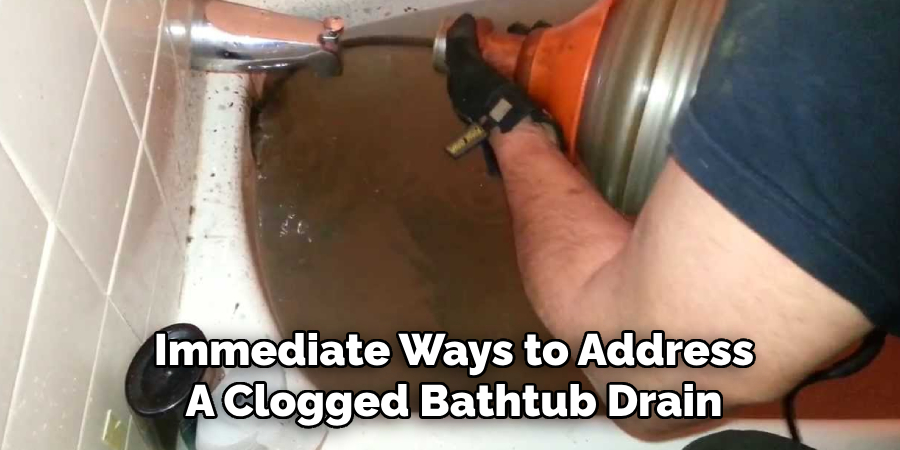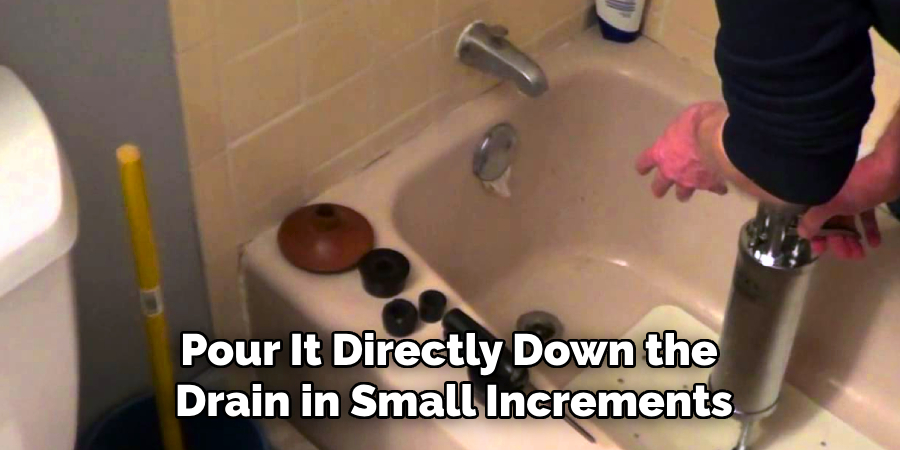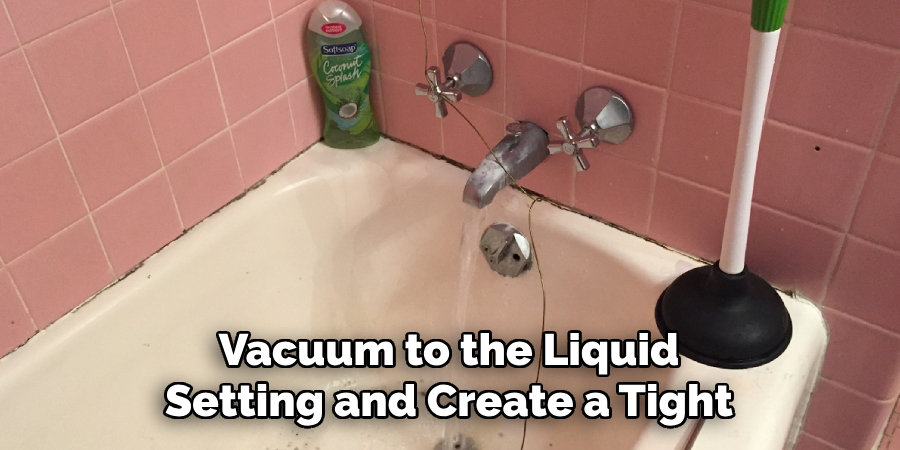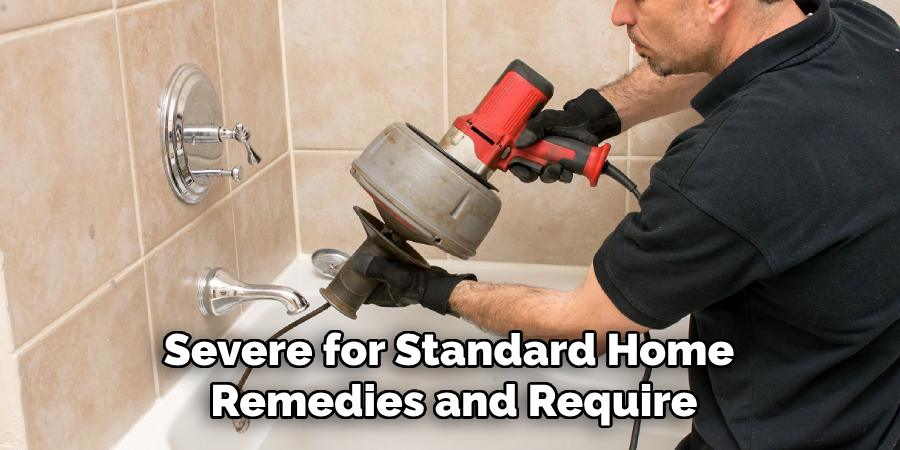A clogged bathtub drain can be a frustrating issue, disrupting your daily routine and causing water to back up. Fortunately, addressing this common household problem doesn’t always require professional help. With a few simple tools and techniques, you can quickly restore your drain to proper working order. This guide will walk you through effective methods of how to unclog bathtub drain.

Common Causes of Bathtub Drain Blockage
Understanding the common causes of bathtub drain blockages can help you prevent clogs and maintain proper drainage. One of the primary culprits is the accumulation of hair, which tends to get trapped in the drain over time, creating a tangled blockage. Soap scum is another frequent issue, as it builds up on the walls of the pipes and combines with other debris. Additionally, dirt and grime from regular use can contribute to slow drainage or complete blockages.
Occasionally, foreign objects like small toys, razor caps, or bottle caps might inadvertently fall into the drain, obstructing the flow of water. By being mindful of these potential causes, you can take preventive measures to keep your bathtub drain clear and functional.
Signs Your Bathtub Drain Is Clogged
Identifying the signs of a clogged bathtub drain early can help you address the issue before it becomes more severe. One of the most common indicators is slow drainage, where water takes longer than usual to flow out of the tub. You might also notice standing water that doesn’t drain at all after using the bathtub. Another sign is unpleasant odors emanating from the drain, often caused by trapped debris or stagnant water. Gurgling or unusual noises coming from the drain can also indicate a partial blockage. Finally,
if you experience repeated clogs despite clearing the drain, it may signal a deeper issue within your plumbing system. Being aware of these signs allows you to act promptly and keep your drain in good condition.
10 Methods How to Unclog Bathtub Drain
1. Manually Remove Visible Debris

One of the most straightforward and immediate ways to address a clogged bathtub drain is by manually removing any visible debris. To do this, put on a pair of rubber gloves and use a flashlight to inspect the drain opening. If you see hair, soap scum, or other gunk obstructing the flow, use your fingers, tweezers, or a small hooked tool to pull it out. This method is particularly effective for minor clogs that haven’t deeply settled in the pipes and can prevent further buildup if done regularly.
2. Use a Plunger for Suction Power
A plunger is a simple yet powerful tool for dislodging stubborn blockages in your drain. First, fill the bathtub with about two to three inches of water to help create a tight seal. Position the plunger over the drain opening, ensuring it covers it completely. Push down firmly and pull up quickly in repeated, vigorous motions to generate suction pressure. This action helps loosen the clog and pull debris up the pipe. Repeat the process several times until the water drains more smoothly.
3. Pour Boiling Water Down the Drain
For clogs caused by soap scum, grease, or oil buildup, boiling water can be an effective and chemical-free solution. Boil a large pot of water and carefully pour it directly down the drain in small increments. Allow each pour to work for a few moments before adding more. The intense heat helps break down and dissolve the stubborn residues clogging the drain. However, if your pipes are made of PVC, avoid this method, as excessive heat can weaken or damage them.
4. Utilize a Baking Soda and Vinegar Reaction

A natural and environmentally friendly approach to unclogging a drain is the classic baking soda and vinegar method. Start by pouring one cup of baking soda directly into the drain, followed by one cup of white vinegar. The two ingredients will react, causing a bubbling and fizzing effect that helps break down clogs. Allow the mixture to sit for 15-30 minutes before flushing the drain with a kettle of hot water. This method is ideal for dissolving minor blockages and deodorizing the drain.
5. Deploy a Drain Snake or Plumbing Auger
A drain snake, also known as a plumbing auger, is a highly effective tool for removing deep-set blockages. To use it, insert the flexible metal coil into the drain and slowly push it further while twisting the handle. When you feel resistance, continue rotating to latch onto or break apart the obstruction. Once the clog is loosened, carefully pull the snake back out, bringing the debris with it. Run hot water down the drain to clear away any remaining particles.
6. Use a Wet/Dry Vacuum for Maximum Suction
If you have access to a wet/dry vacuum, it can serve as an excellent tool for extracting stubborn clogs from your bathtub drain. Set the vacuum to the liquid setting and create a tight seal around the drain opening using a rubber attachment or a damp cloth. Turn the vacuum to its highest setting and let it suck out the obstruction. This method works particularly well for removing hair clumps and other solid debris lodged deep in the pipes.

7. Dissolve Greasy Buildup with Dish Soap and Hot Water
Dish soap is specifically designed to break down grease and oil, making it an excellent option for unclogging drains affected by soap scum and greasy residue. Start by pouring a generous amount of liquid dish soap into the drain, allowing it to coat the inside of the pipe. Then, follow up with a pot of hot water to help dissolve and flush away the buildup. If necessary, repeat the process to fully clear the obstruction.
8. Create a Hook with a Wire Hanger
If you don’t have a drain snake, a simple wire hanger can be transformed into a useful clog-removal tool. Unbend the metal hanger and create a small hook at one end. Carefully insert the hooked end into the drain and maneuver it around to catch and pull out accumulated hair and debris. Be gentle to avoid pushing the blockage further down. Once you’ve removed as much as possible, rinse the drain with hot water to wash away any remaining particles.
9. Use a Chemical Drain Cleaner Cautiously
When natural methods fail, a chemical drain cleaner can provide a last-resort solution for tough clogs. Choose a high-quality commercial drain cleaner and follow the manufacturer’s instructions carefully. Pour the specified amount into the drain and allow it to sit for the recommended duration before flushing it out with hot water. Be mindful that frequent use of chemical cleaners can corrode pipes over time, so reserve this method for occasional use only.
10. Call a Professional Plumber for Severe Clogs

If none of the previous methods successfully clear the drain, it may be time to call in a professional plumber. Some clogs are too deep or severe for standard home remedies and require specialized tools such as hydro jetting equipment. A professional can diagnose the issue and implement a long-term solution that prevents further blockages and damage to your plumbing system. Seeking expert help ensures that the clog is handled effectively without risking harm to your pipes.
Things to Consider When Unclogging a Bathtub Drain
Before attempting to unclog your bathtub drain, there are several factors to keep in mind to ensure safety and effectiveness:
- Type of Pipes: Different materials like PVC, metal, or older infrastructure may react differently to certain methods such as boiling water or chemical cleaners. Always verify your pipe type before proceeding.
- Severity of the Clog: Determine whether the blockage is minor or more severe. Simple methods like using a plunger or natural solutions might suffice for small clogs, while significant obstructions could require professional intervention.
- Safety Precautions: When using tools like a drain snake or chemicals, wear gloves, goggles, and ensure proper ventilation to avoid harm. Follow instructions carefully when working with powerful substances.
- Frequency of Clogging: Regular clogs might indicate a deeper issue such as inconsistent maintenance or underlying problems in your plumbing system. Addressing the root cause can prevent recurring problems.
- Environmental Impact: Opt for eco-friendly approaches whenever possible, such as baking soda and vinegar, to minimize harmful effects on the environment and water systems.
- Temperature Sensitivity: Avoid methods involving high heat if your plumbing system includes sensitive materials like PVC, as it can lead to warping or damage.
- Budget and Tools: Consider the costs and availability of tools or products. For persistent blockages, investing in a drain snake or wet/dry vacuum might save money over time compared to frequent purchases of chemical drain cleaners.
Being mindful of these considerations can help you approach the task prepared and avoid unnecessary damage or complications.
Conclusion
Unclogging a bathtub drain doesn’t always require expensive tools or professional assistance. With these ten effective methods, you can resolve most drain blockages using simple household items and practical techniques. To prevent future clogs, consider using drain covers to catch hair and debris, regularly cleaning the drain with baking soda and vinegar, and avoiding the disposal of grease and heavy soap scum in the tub. Thanks for reading, and we hope this has given you some inspiration on how to unclog bathtub drain!
About the Author
Adrian Green is a passionate woodworking enthusiast who has dedicated his life to the craft of woodworking. From his early days working alongside his father in the family woodworking shop, Adrian has honed his skills and developed a deep love for creating beautiful, functional pieces with his hands. As the voice behind The Woodenify Blog, he shares his knowledge, tips, and inspiration with fellow woodworkers of all skill levels, helping them build confidence in their abilities while learning new techniques.
Professional Focus
- Specializes in DIY woodworking projects, from furniture making to home décor.
- Provides step-by-step guides, tips, and practical tutorials for woodworkers at any skill level.
- Focused on empowering readers with confidence and knowledge through easy-to-follow instructions and hands-on techniques.
- Passionate about building a community where makers can share, learn, and grow together in the world of woodworking.
Education History
University of Craft and Design – Bachelor of Fine Arts (BFA) in Woodworking and Furniture Design
Woodworking Apprenticeships – Gained extensive hands-on experience through various workshops and mentorships with seasoned craftsmen, refining carpentry and furniture-making skills.
Expertise
- DIY woodworking, carpentry, furniture making, and home décor projects.
- Creating clear, accessible tutorials and guides for beginner to advanced woodworkers.
- Helping readers experience the satisfaction and fulfillment of turning raw materials into stunning finished products.
